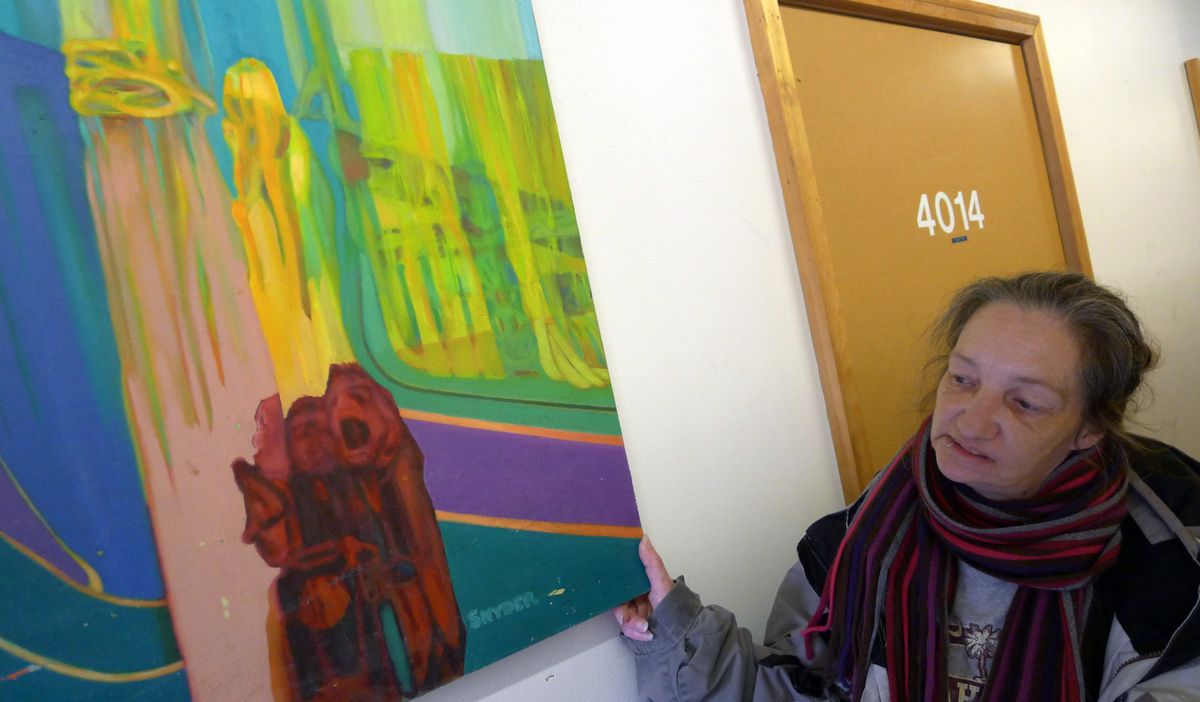Homeless artists draw upon their experiences
Portland charity has kept artwork for three decades

PORTLAND – To get through painful comedowns following highs, the heroin addict draws bright colors and strong lines with a sure hand, creating beautiful surrealist images.
He’s about 50 and has lived on the street for a long time. His drawings are being stored with scores of others, some dating back decades, in a Sisters of the Road storage space in Northwest Portland.
“Imagine a person, hurting enough to be an addict, reaching inside to extract such beauty from himself,” muses Brenda Morgan, development co-manager for Sisters of the Road, as she examines one of his pieces.
He’s still on the street, still struggling with addiction. But the art supplies Sisters and other organizations have long provided are an escape for him and others living on the street. Soon some of their art will be on display during the organization’s first Journeys Art Festival in May.
“Art is healing for folks,” says Jeannie Lawer, who used Sisters’ programs while she was homeless for many years. “It’s nice to go inside, get warm, and forget.”
Lawer now has an apartment and co-manages the cafe at Sisters of the Road, which has offered a cafe and programs for Portland’s homeless since 1979.
In her spare time, Lawer tracks down the stories behind the artwork in the storage closet; some dates back to Sisters’ founding. The background stories will accompany the selection of the artwork to be displayed at the Journeys Art Festival fundraiser. Morgan hopes to find funding to someday make the pieces and their backstories into a traveling exhibition.
Lawer knows many of the artists and their stories first-hand from when she was homeless.
She laughs at a realist ink drawing showing a man sleeping, hat pulled low over his face.
“That’s Sarge, and he wasn’t supposed to be sleeping there,” she says, laughing. She was sitting beside the artist at the Sisters cafe counter in the early 2000s while he drew Sarge sleeping on the sidewalk, technically not allowed.
Lawer gets a somber look on her face with the next piece: Bright colors frame red figures, screaming in anguish in the bottom corner of the canvas, but dwarfed by the brightness that overwhelms the canvas around them.
“I look at this like that could’ve been me,” Lawer says. “A few years ago, this was me.”
Another piece, a figure made of tissue paper pasted to posterboard, is captioned on the back: “Think of me as one of you. Do not take me for a fool.”
A series of large canvases painted by Moe Schwartz in 1993 and 1994, when he was homeless, are done in a classic 1930s American style, with bold colors and near-realism. Lawer says they scavenged the canvases from garage sales; other paintings are underneath.
One painting shows people lounging around a fire under the Hawthorne Bridge as a bus full of wine-drinking aristocrats crosses. Others depict some seedy realities of homelessness.
“Some people do art not to make something beautiful, but because it’s what inside,” Morgan says. “People can relate to art in a way they can’t relate to other things. It gives a voice to people used to being silenced.”